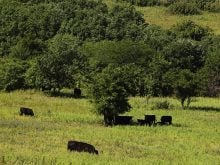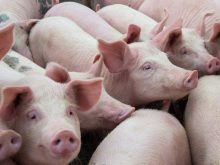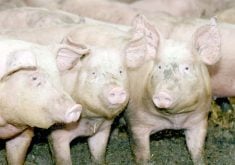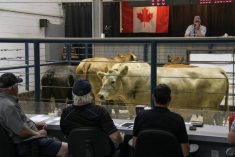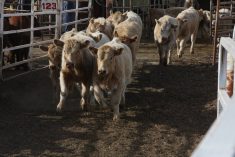INNISFAIL, Alta. – Loyalty to one cattle breed has paid the bills for
the Edgar family for 70 years.
Canada’s longest running purebred production sale showcasing horned
Herefords has put the Little Red Deer Hereford farm name on the map.
Based at Innisfail, the Edgars have run their sale for 50 consecutive
years.
The farm, homesteaded by Wilf Edgar in 1906, is now run by his son
George and grandsons Wilf and Peter.
Wilf Jr. and his wife Deb manage the cattle side with 100 purebred and
Read Also
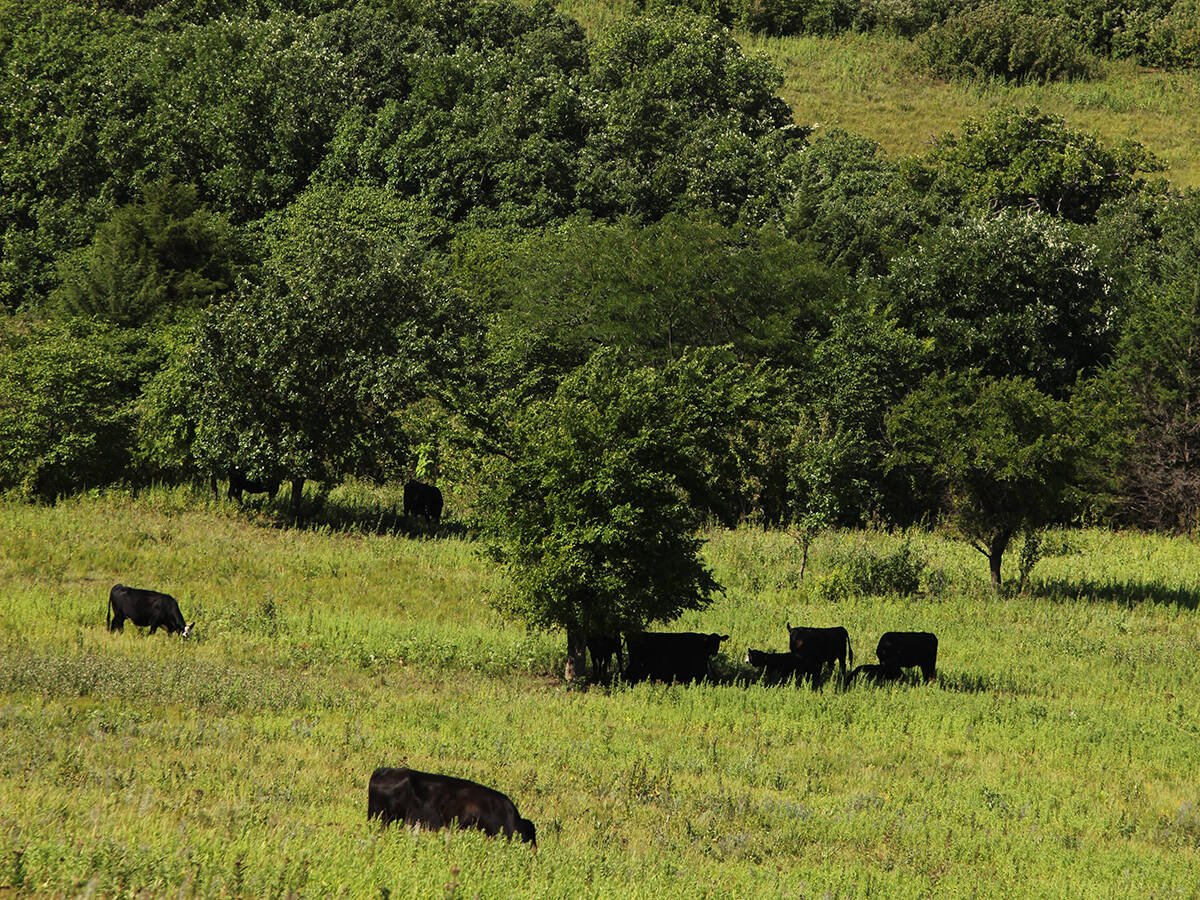
Beef cattle more prone to trace mineral deficiencies
The trace mineral status of our cows and calves is a significant challenge for western Canadian producers and veterinarians.
50 commercial cows while Peter runs the grain operation. George and
Marjorie have moved out of the spotlight.
“We had enough good years so now I can turn it over to them,” George
said.
The Edgars have remained loyal to Herefords and had no urge to switch.
The commercial side of the cattle business is their mainstay. Some
buyers have returned for 30 consecutive years because they appreciate
the quality.
Cattle with the LRD prefix on their names have travelled the world.
Live animals have gone to Australia, New Zealand, Sweden and Great
Britain. Now those genetics are exported in the form of embryos and
semen.
The resurgence in the popularity of British cattle with their marbling
qualities and feed conversion ratios are major benefits for everyone in
the beef business in the last decade, said George Edgar.
Last year they used ultrasound tests on their bulls to measure meat
quality and ribeye size. One home-raised bull is in the top three
percent for marbling and ribeye size in Canada.
Hereford cows are known for their docility and mothering abilities but
recently gained a poor reputation for bad udders. That problem has been
improved through hard culling by breeders.
“Everything sold and people didn’t cull. Poor qualities emerged,” said
George.
For the last several years, feed shortages and downsized herds worried
many producers who depend on commercial customers to buy breeding
stock.
However, good quality animals always bring better dollars, George
noted. Their high selling bull at the 50th sale was a three-quarter
interest in a yearling bull for $16,000 to Bar Pipe Farms at Okotoks,
Alta.
The Edgars’ secret to business longevity is a willingness to pursue
quality wherever they find it.
“We buy the best bulls. We have to. We bought the most expensive bulls
we could find. Cattle paid for our buildings,” said George.
Their own cattle have also caught the eye of high rollers. Their best
price was a bull calf that went for $270,000 in a past sale.
George’s son Wilf is optimistic about the cattle industry. After three
years of drought and downsizing, people will need to start rebuilding
and many are likely to look at British breeds.
“The Herefords have a big gene pool and we have the marbling quality,”
Wilf said.
Building a quality herd starts with breeders and their ability to
select good cattle.
“It’s bred into you and you just absorb it over the years.”
And, after this spring’s cold calving season and a dried out summer,
people found Herefords were survivors. They are easy to handle and can
forage for feed.
Another reason for success at Edgar sales is their smaller size.
They don’t travel the show circuit to the same degree as other families
but they have won at prestigious shows like the Denver National Stock
Show and Calgary Stampede.



